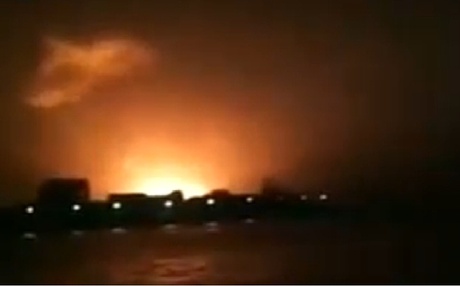
Mumbai, Aug 14: The Indian Navy chief said the cause of the huge explosions that sank INS Sindhurakshak submarine here early on Wednesday was not known but sabotage was unlikely.
Admiral DK Joshi told the media after defence minister AK Antony visited the disaster site that any number of factors could have led to the tragedy that is believed to have killed 18 officers and sailors. He said initially there was a primary explosion of smaller intensity which in turn caused a major explosion, destroying ammunition stored in the front section of the deep sea attack vessel.
"We cannot rule out sabotage," he said. "But indications at this point do not support the (sabotage) theory.
"At this point of time we are unable to put a finger on what exactly could have gone wrong."
Admiral Joshi appeared to indicate that all 15 sailors and three officers who were in the submarine may have perished when he said: "We hope for the best and prepare for the worst."
He added that the submarine had remained sunk for more than 12 hours. He said the vessel, recently refurbished in Russia, had a large stock of ammunition, fuel and oxygen water.
"Any combination of any of these malfunctioning could have resulted (in the explosion)."
The navy chief said the submarine had in-built safety measures including automatic and manual monitoring mechanism but "obviously they have not functioned".
He said naval divers had now reached the sunk submarine and managed to open the main hatch that had got jammed. He said the navy would be able to determine the reason for the "major catastrophe" only after a thorough study of the submarine.
The admiral said a board of inquiry ordered into the incident would submit its report within four weeks. He refused to link Wednesday's disaster with any previous incident in the same submarine.
"This is a stand alone incident. There can be no connection with any earlier incident."





Comments
Add new comment